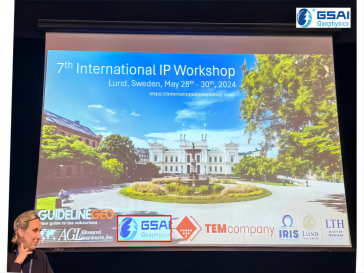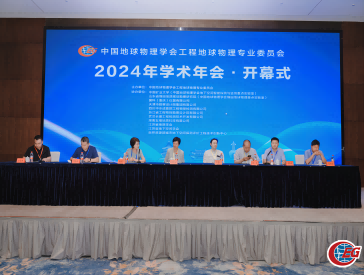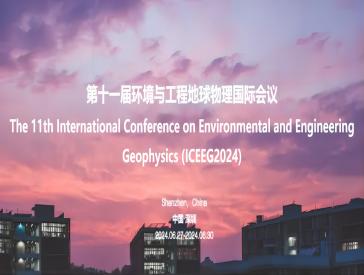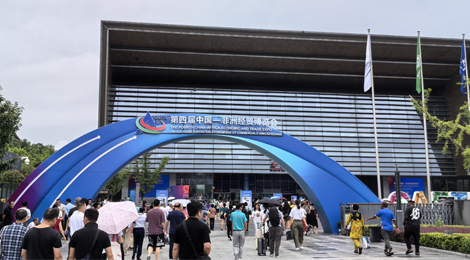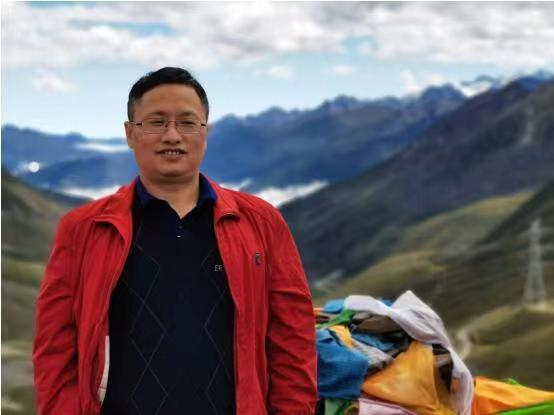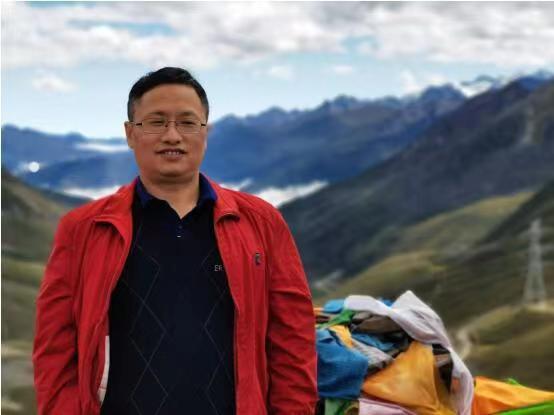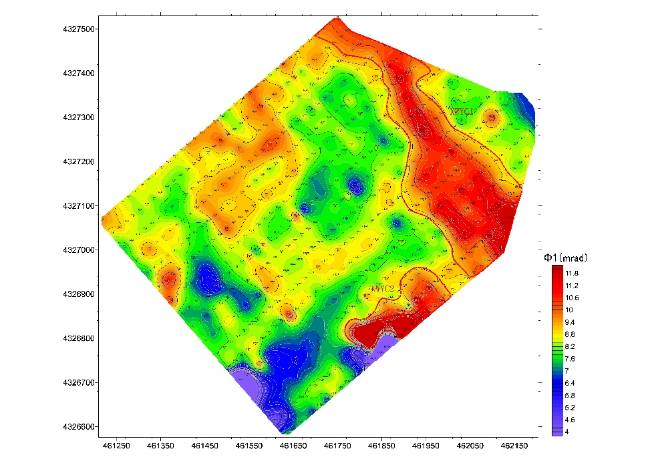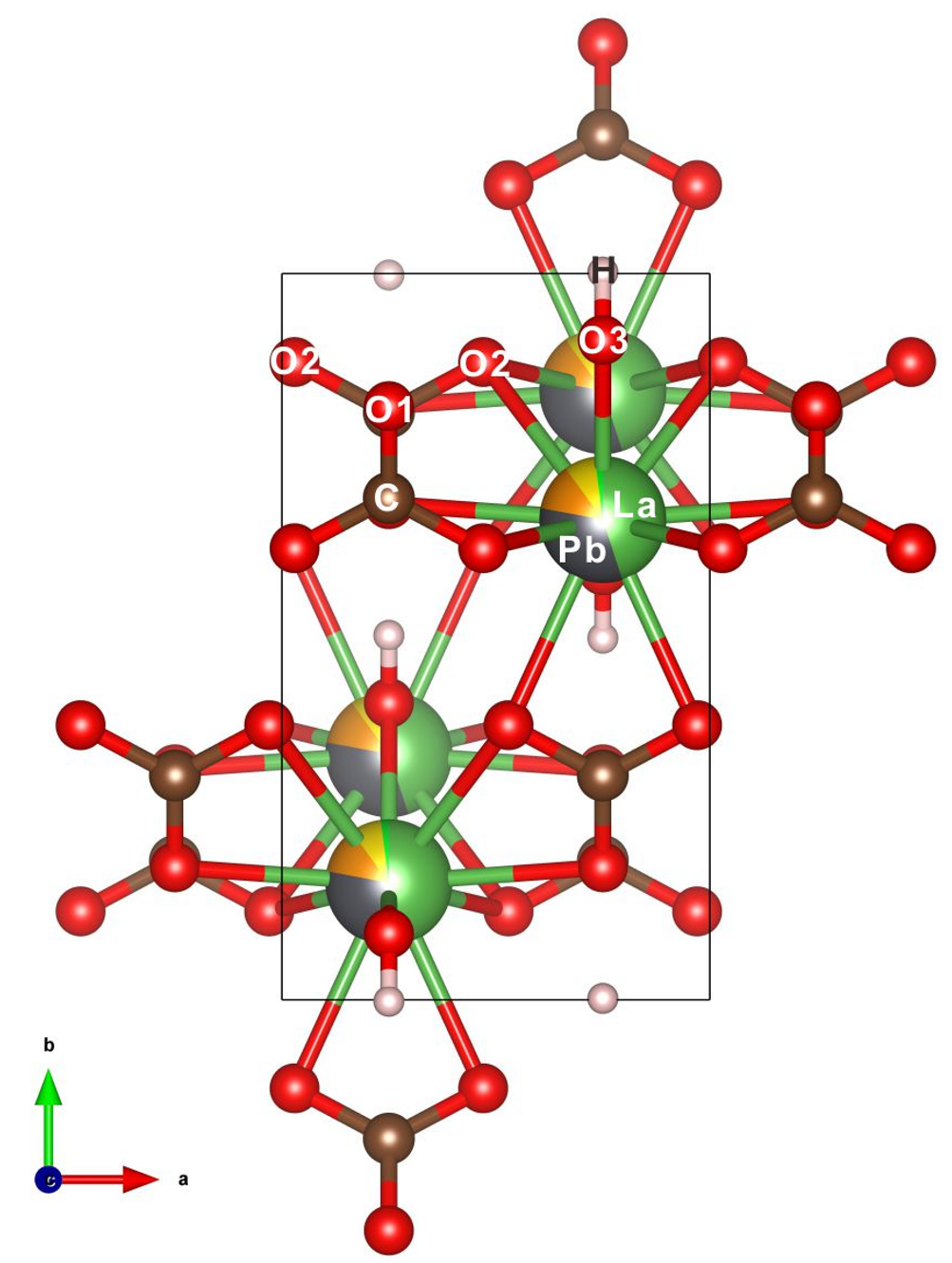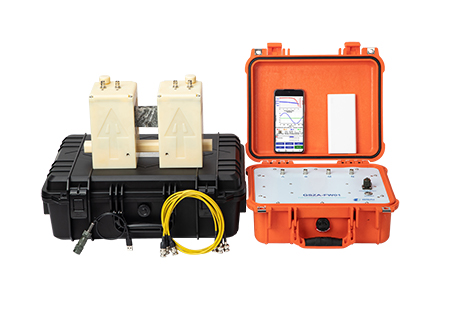Chen Rujun: Interpretation of deep secret exploration of unknown treasures
Minerals are important resources to meet the national economic and social development. Developing mineral exploration technology and equipment to improve the exploration depth, accuracy and efficiency is the core means to achieve a breakthrough in deep prospecting. Developing independent core technologies and reducing or getting rid of dependence on foreign technologies are strategic measures to improve the international competitiveness of resource exploration and ensure resource security.
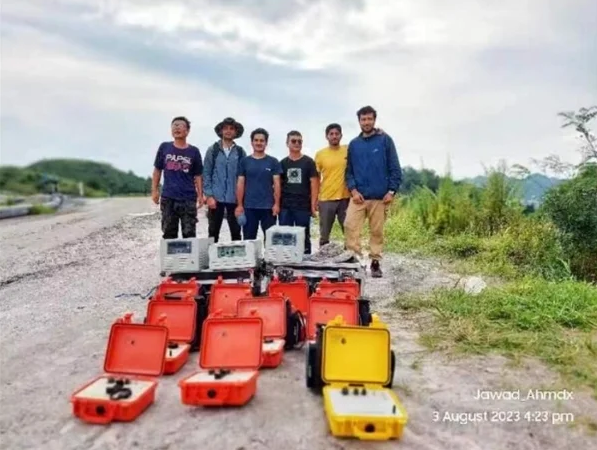
Chen Rujun, an associate professor at the School of Geosciences and Info-physics at Central South University, aims to provide geophysical explorers with more accurate information about underground minerals.
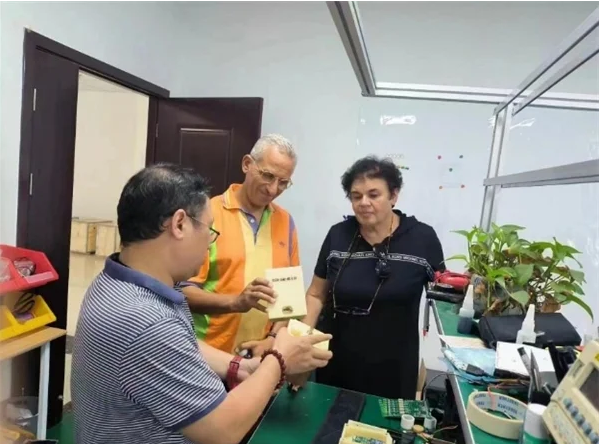
The above geophysical exploration work encountered is electromagnetic interference! Electromagnetic interference greatly affects the exploration precision and effective exploration depth, and seriously affects the deep prospecting effect. In order to overcome the above problems, Chen Rujun research group of Central South University has successfully developed anti-interference AMT/MT and spread spectrum IP through more than 20 years of efforts. The anti-interference AMT/MT can automatically identify and separate near-field interference, and high-quality AMT/MT impedance data can be collected in the strong electromagnetic interference region. Spread spectrum IP can use 1-10A power supply current to realize bilateral three-pole device exploration depth of more than 1000-1500 meters, and collect IP information from deep mining and non-mining areas, which provides a basis for drilling layout, and is a key support technology for deep prospecting breakthrough.
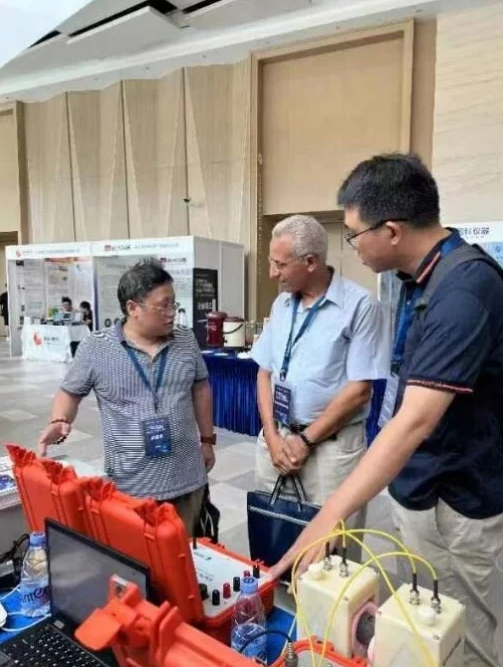
Anti-interference IoT AMT/MT
Magnetotelluric method is a branch of electromagnetic method that detects underground target media by measuring orthogonal natural electromagnetic signals. It uses the skin effect of electromagnetic induction, that is, high-frequency electromagnetic waves penetrate shallowly and low-frequency electromagnetic waves penetrate deeply, and changes the frequency of electromagnetic waves to obtain resistivity information of geological bodies at different depths.
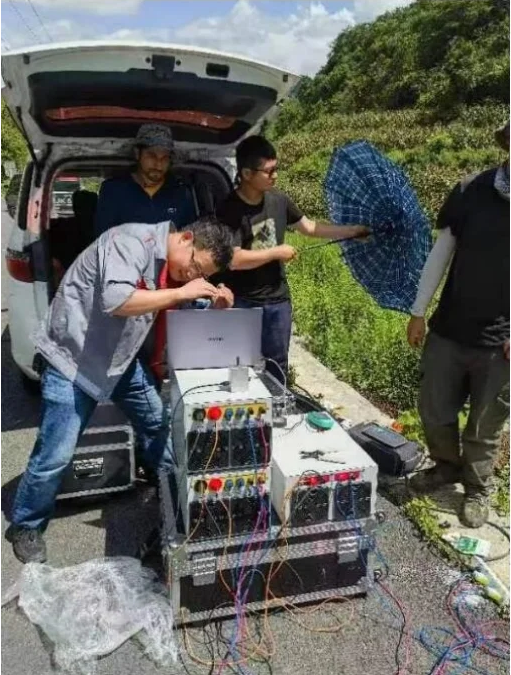
Because the natural electromagnetic field signal has the characteristics of strong randomness, weak energy and easy to be disturbed, the effect of geomagnetic exploration depends largely on the sensitivity of the acquisition equipment, noise level and anti-interference ability.
According to the characteristics of MT signals, after more than 10 years of research, Chen Rujun team has made a lot of innovations in instrument technology. The latest electronic circuit technology, signal processing technology and communication technology are applied to the magneto electromagnetic instrument, and a set of low-noise, wide-band, low-power and lightweight Internet of things anti-interference MT/AMT instrument GSEM-W10 has been developed. The magnetotellur-data processing software GSEM-PROS is developed jointly with the MT/AMT data processing experts of the Russian Academy of Sciences.
After being industrialized by GSAI Geophysics, this set of technical equipment has been applied in many mineral resources and groundwater exploration projects by many exploration units, and has won unanimous praise.
Compared with conventional MT/AMT equipment, GSEM equipment has the characteristics of low noise, low power consumption, strong anti-interference ability, high efficiency and convenient for survey.
GSEM-W10 equipment has been applied to Zhugongtang large lead-zinc mine in Guizhou, Chating porphyry copper-gold mine in Anhui, Guchenghu copper-lead-zinc-gold-silver polymetallic mine in Nanjing, Jiangsu, Baiyun Obo rare Earth Mine in Inner Mongolia, and Xiaoshiqiao Lithium mine in Yuxi, Yunnan, etc. The exploration results of some cases have been published in industry authority journals.
Large depth high density spread spectrum IP
IP (Induced electric Field) is a geophysical exploration method to solve geological problems by studying the differences of resistivity and polarizability of rock and ore under the action of electric field in time domain or frequency domain. Generally speaking, the resistivity of metal ore body is low and the polarizability is high. The surrounding rock has higher resistivity and lower polarizability, so the underground metal ore body and surrounding rock can be distinguished by the resistivity and polarizability measured at the surface. IP method has great convenience and superiority in many aspects. Compared with other electric and electromagnetic methods in the exploration of solid minerals, it can detect the anomalies caused by disseminated metal sulfides. However, this cannot cover up its shortcomings, such as shallow exploration depth, low construction efficiency, high exploration cost and inability to distinguish metal ore from carbonized surrounding rock.
In view of the above defects, the team of Associate Professor Chen Rujun made a lot of innovations in instruments and methods, and creatively combined the spread spectrum communication signal processing technology and weak geophysical signal acquisition technology to develop the spread spectrum IP detection technology and equipment, and named this technology spread spectrum IP (SSIP). The system has the characteristics of large depth, high precision, anti-interference, low cost and high efficiency. At present, it is widely used and has produced significant social and economic benefits. In 2022, it won the first prize of China Non-ferrous Metal Industry Science and Technology.
Strong cultural electromagnetic interference, the distinction between ore-induced anomaly and non-ore-induced anomaly, weak information extraction and large depth IP information detection are the main problems of geophysics in non-ferrous metal mineral exploration. The spread spectrum IP method uses m sequence spread spectrum signal, which has the ability to resist strong electromagnetic interference. It can measure the IP parameters in the depth of more than 1000 meters, and can effectively identify the non-ferrous metal ore-induced anomalies. After the result appraisal, the technology has reached the international leading level. This technology has been applied in many domestic projects in Xizang, Gansu, Yunnan, Guizhou, Henan and Jiangsu.
In addition, Rujun Chen's team also developed the SIP response analyzer GSZA-FW01 for rock ore samples.
The instrument measures the spectrum IP response of rock ore samples in the frequency range 0.001-1000 Hz, which provides a physical basis for the differentiation of mine and non-mine IP anomalies. It has provided a physical basis for the differentiation of lead-zinc ore, copper-molybdenum ore, copper-gold ore, gold ore and other ore and non-ore areas, and effectively assisted the strategic action of ore prospecting breakthrough. Compared with foreign mainstream instruments, the relevant instruments have the advantages of light instrument, high input impedance, high measurement accuracy, full waveform acquisition, and can study the nonlinear effect of IP. At present, it was produced by GSAI Geophysics, along with the spread spectrum IP instrument has been applied in 18 provinces, autonomous regions and municipalities directly under the Central Government, which can be widely promoted and applied.
Aiming to overcome the problem of 3000 meters underground
Chen Rujun pointed out that IP information can directly reflect the content and scale of metal sulfides, and metal sulfides are closely related to various mineralization and ore bodies. Therefore, IP information is an urgent information for deep prospecting breakthrough. The existing IP equipment can obtain IP information within the depth of 1000 meters at most, but cannot obtain IP information within the depth of 1000 meters to 3000 meters. At present, it can only rely on electromagnetic method to obtain resistivity information within the depth of 1000 meters to 3000 meters. Deep drilling verification has occurred many times in China, only low resistance fracture zone without any mineralization information has been found. It brings great risk to the deep prospecting breakthrough.
At present, we urgently need to obtain IP information within the depth of 1000 meters to 3000 meters, and we need to solve the problems of portable high-power spread spectrum IP transmission (considering that mineral exploration is often in the mountainous area with inconvenient transportation), deep spread spectrum IP signal extraction, and large-scale network observation.
Looking to the future, Chen Rujun's team will also realize the effective collection of spread spectrum IP signals and the effective extraction of spread spectrum IP information within the depth of 3000 meters, as well as the realization of high-density two-dimensional and three-dimensional sounding of spread spectrum IP within the depth of 3000 meters.
Chen Rujun said that the deep prospecting potential is huge. After realizing the effective collection, processing, inversion and interpretation of the spread spectrum IP information in the depth of 3000 meters, the IP information generated by metal sulfide in the depth of 3000 meters can be effectively obtained, which is of great significance for reducing the risk of deep prospecting and implementing the strategy of deep prospecting breakthrough.
Source:https://baby.ifeng.com/c/8T61A4GHCsu




